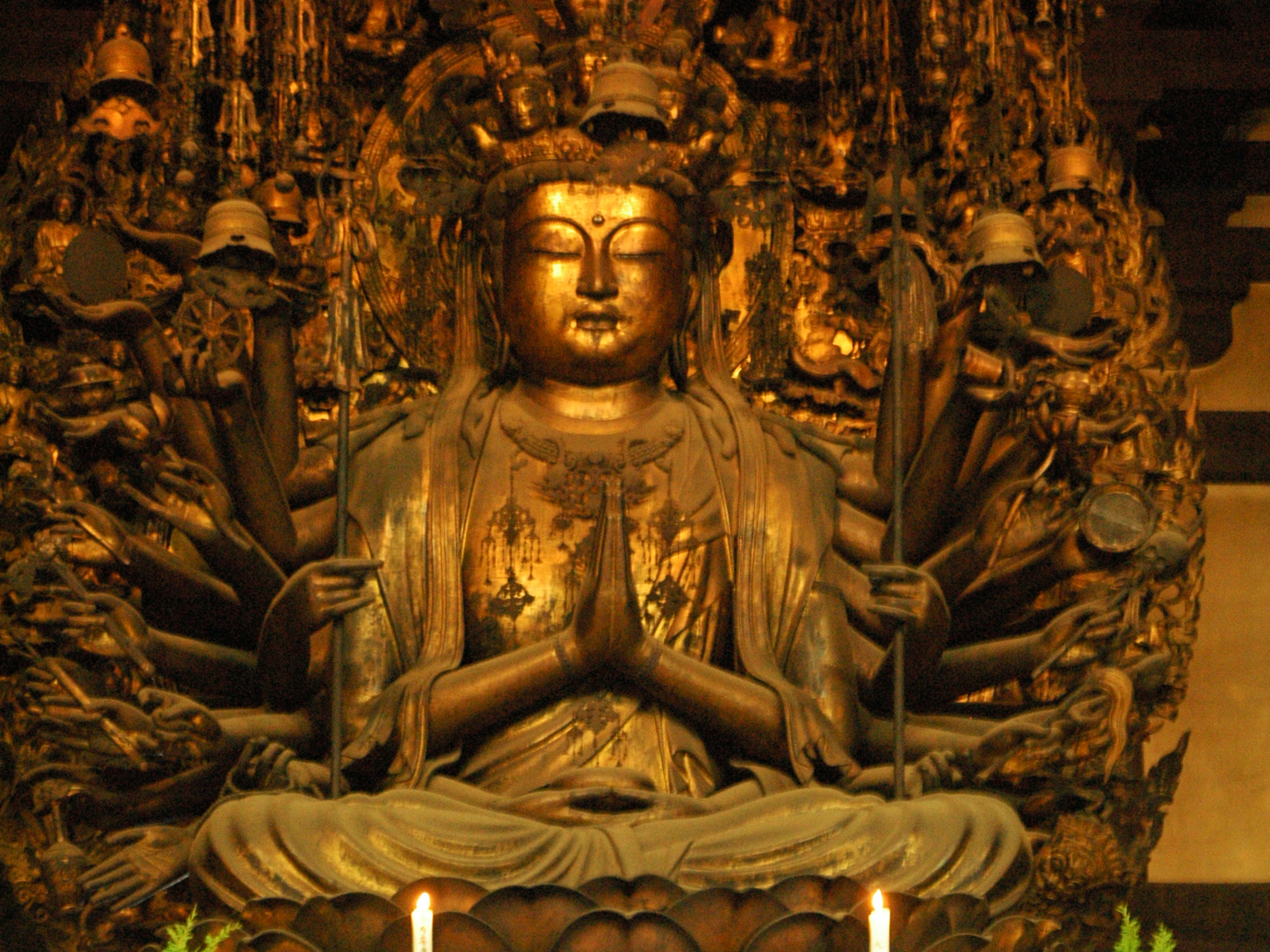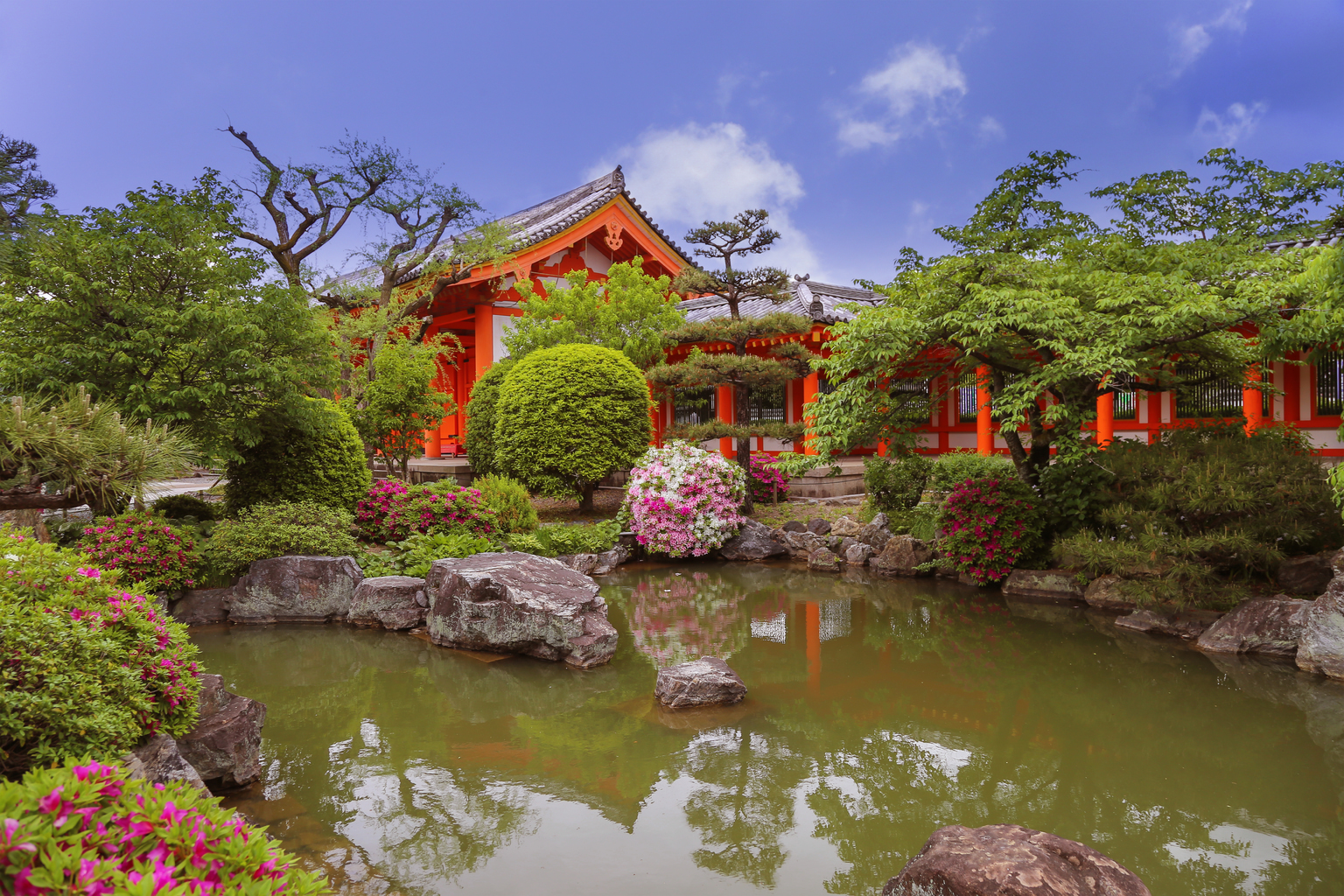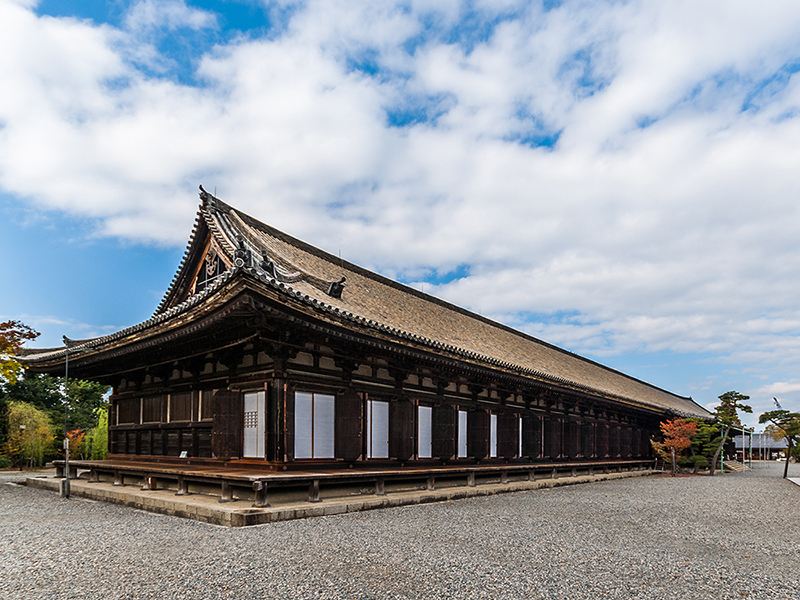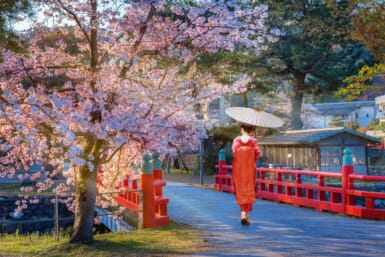Kannon is the Japanese name for one of the most important deities in the Buddhist pantheon. Often referred to as “the goddess of mercy” or “she who perceives the sounds of the world,” Kannon can take many forms, the most powerful of which is said to be the thousand-armed version. According to sacred texts, the goddess needs all of those hands to help her fight suffering in the world. Whether she does it by literally beating evil to death with 1,000 punches at once remains unclear, though one can assume.
But back to the point: if the goal of Thousand-Armed Kannon is to bring joy to the world then the Sanjusangen-do temple in Kyoto should logically by the happiest place on Earth (sorry, Disneyland). After all, it does house 1,001 statues of the multi-limbed goddess.
Samurai Duels and Healing Willows
The temple name translates to “the hall with 33 spaces between columns,” which is beautifully self-explanatory. The 120m-long hall is one of the longest wooden buildings in Japan and all that was left after a 1249 fire destroyed much of the original temple complex. Thankfully, the most important part was spared and we didn’t lose the place outside of which famed warrior Musashi Miyamoto dueled Denshichiro Yoshioka in 1604. Or the place where Buddhists can come and get touched by sacred willow branches to cure their headaches. Fitting, considering that Sanjusangen-do is dedicated to a goddess who’s really against suffering.

The Thousand-Armed Kannon at Sanjusangen-do. Image: Wikimedia Commons
The main image of Sanjusangen-do’s Kannon sits in the middle of the temple in a meditative pose. The statue, which was created in 1254, is about three meters tall and is flanked on both sides by 500 smaller depictions of the goddess. They’re all made from Japanese cypress covered in gold leaf and are organized in 50 columns and 10 rows. While most were constructed after the complex burned down, 124 of the smaller Kannon statues are from the original temple. Additionally, the goddesses are protected by 28 statues of guardian deities and the depictions of Fujin and Raijin, the fearsome gods of wind and lightning. That probably sounds like a lot of numbers to commit to memory but, unfortunately, we are just getting started.
Ride the 25 Planes of Existence
The Thousand-Armed Kannon has another anatomical peculiarity – 10 additional heads atop its regular one, bringing the total number to 11. The sutras tell us that all those heads help Kannon better perceive the suffering of the world, which she can then take care of with her 1,000 arms. Interestingly, the statues themselves do not have 1,000 arms, which sounds a little bit like false advertising. In actuality, they “only” sport 42 arms, but this is where Buddhist Math comes into play. First, you need to subtract the statues’ regular two arms, and only count the additional 40 growing out of their backs. Then, you have to multiply that by the 25 planes of existence in Buddhist cosmology (though some schools actually count more). And just like that, you come up with a 1,000. And yet, we are still not done.

The gardens of Sanjusangen-do
It’s believed that Kannon can transform herself into 33 different figures, so Sanjusangen-do’s 1,001 statues represent 33,033 possible variations of the goddess. It’s no wonder then that, according to legend, if you look at the temple’s smaller Kannon statues, you will see the face of the person you’re longing for among them. If not, well, maybe Kannon, with a grand total of her 1,001,000 arms found inside the Sanjusangen-do hall, will help you find your paramour. She’s probably in a good mood nowadays, too, what with having all of her statues repaired after more than 45 years of restoration work.
A Restored Kannon is a Happy Kannon
The preservation work of the temple’s national and cultural treasures started all the way back in 1973, and on average, only about 20 or so statues were repaired each year. The statues are nearly as old as Genghis Khan, so the process of cleaning them and restoring their gold leaf coating without damaging the images was a painstaking process that ended up costing close to ¥110 million.
But as of 2017, the work has been completed, and Kannon is ready to receive all visitors wishing to rid themselves of sorrow and suffering.
Official website (in Japanese) at www.sanjusangendo.jp









